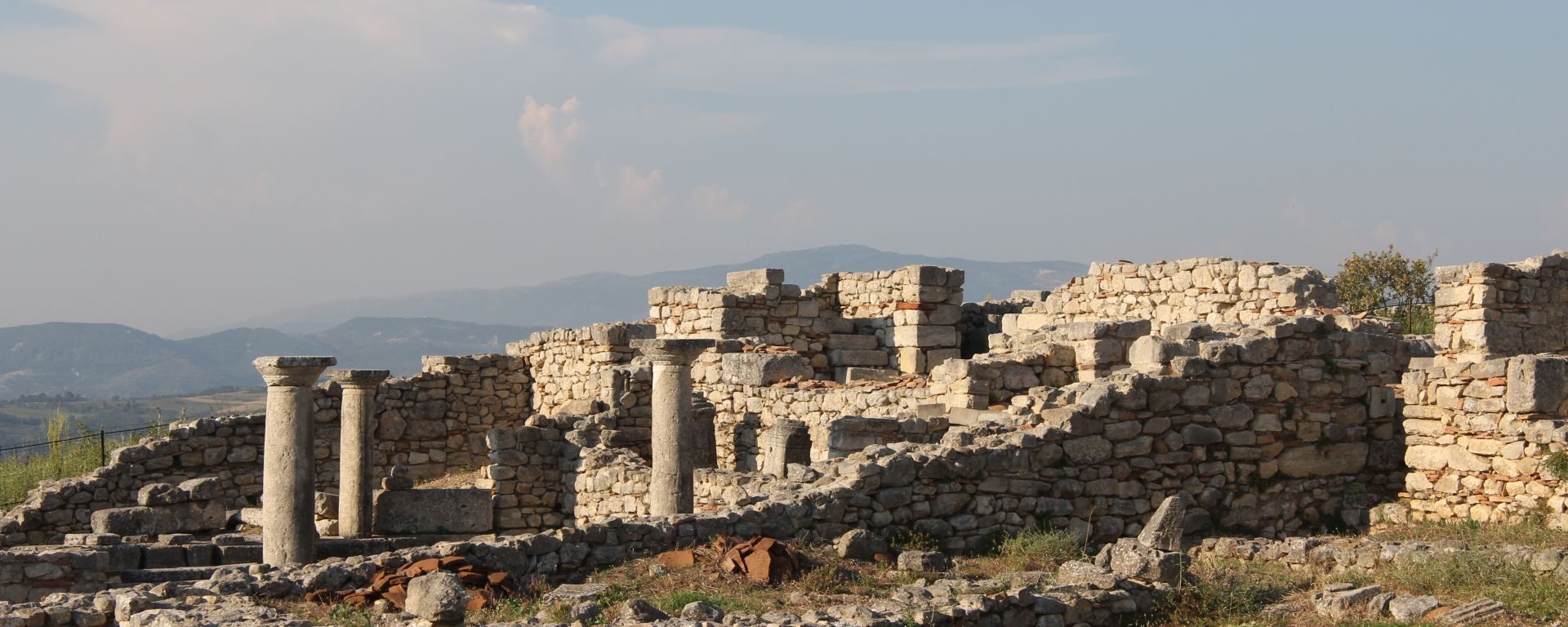The first time Florjan Musaraj visited the Bylis Archaeological Park, he was five years old. Growing up in the nearby village of Kash, he remembers walking around the park with his father and listening to him whisper stories about the glory of the ancient city.
“He used to tell me that the name of the area, Mallakastër, according to legend, derives from a saying of invaders who referred to it as a bad castle (Mal’castelo) because it was so difficult to conquer. I went there every year as a child, and that’s why I have such a special connection to the historical city and its culture. For me, Bylis represents not only a long history but also a personal story of family memories, picnics and childhood experiences,” says Musaraj.
It was this personal connection that led him to apply for an open call to train local tourist guides, as part of the programme EU for Economic Development – Tourism-led, local, economic development, with a focus on Cultural Heritage. The EU-supported project works on improving skills and capacities while enhancing cooperation between local communities and park administration. Musaraj saw this as an opportunity to expand his knowledge, strengthen his relationship with the Archaeological Park of Bylis and share its history with tourists, visitors and future generations.
“For me, it felt like a duty and a mission. I studied Electrical Engineering in Tirana, and when I returned to my village, I wanted to create opportunities for young people like me so they wouldn’t have to leave. That is why I applied for this training course. It is a good opportunity for young people to promote the historical and cultural values of Mallakastër,” he explains.
He is one of 16 applicants following lessons across various modules, learning the history of the site from Professor Neritan Ceka, who has excavated there for decades, as well as attending communication training. The applicants will be certified in November.
“I teach them the communication module, which covers group management, handling cultural differences, group psychology, public speaking techniques, and guidelines on what a guide should and should not do, whether on an archaeological site, a walking tour, in a museum or on a moving vehicle,” says Ardiola Alikaj, an international trainer. Speaking beside the C Basilica in Bylis – a 6th-century sanctuary paved with mosaics – she explains to the students that at the entrance of the park, a guide should outline the itinerary, tour length, meeting point and time, and begin with the monument that most interests the visitors.
According to team leader Ilir Parangoni, EU for Economic Development – Tourism-led, local, economic development, with a focus on Cultural Heritage is built on three main pillars. “The first is the conservation of the park’s cultural heritage, which includes the areas of Bylis and Klos. The second is the improvement of tourist infrastructure. The third – and most important – is the economic development of the local community. This pillar involves a wide range of local development initiatives, starting with training young people from the community as guides,” says Parangoni.
The project’s work with the park began with drafting key documents, including a management plan and legal frameworks. It is now moving forward with plans to create a visitor centre, information panels, a museum, a community corner and trails within Bylis Park. “We will collaborate with the Polytechnic University of Milan to train young specialists in conservation. The aim is to develop the area as a tourist destination with qualified employees, good services and strong management. After a visibility campaign promoting Bylis’s heritage to visitors, the project will work with the local community to create spaces dedicated to them and their products. Artisanal local products will have their own space, and we aim to highlight what is authentic in the area – from traditional recipes to embroidery. In the end, we will be able to offer visitors both the archaeological heritage of the park and the products of the community nearby. In this way, we will have an exceptional tourism product,” notes Parangoni.
With ten centuries of history, from the 4th century BC to the 6th century AD, the hill where the park is located offers a striking view of the Vjosa River – but there is much more to discover. “I have lived here all my life, but during the training I have learned so many things about the area that I never knew. We have opportunities for cultural, historical, natural and industrial tourism. We have forests, reservoirs, the Poçem Plains, but also the Lakuriqi Cave, which I had never even heard of,” says Musaraj, a future local guide in Mallakastër who is now rediscovering his home region.

